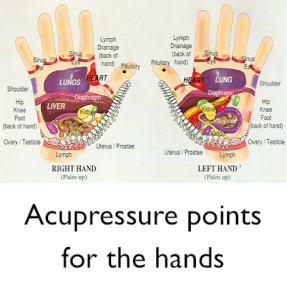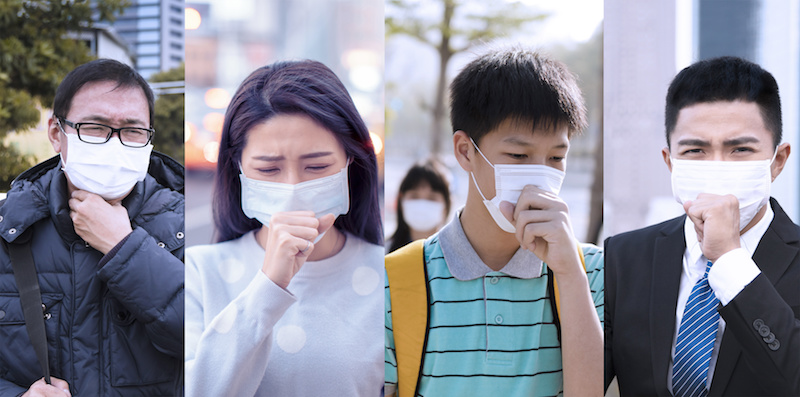Have you ever held your forehead or temple because of a splitting headache? This is a natural impulse that we all have, and it may be for a reason. It may actually help relieve pain, due to an ancient treatment called acupressure.
Facts About Acupressure
History:
- Over 5,000 years ago, the ancient Chinese discovered that putting pressure on certain areas of the body helped alleviate pain, and helped with functions of internal organs. Since then, the Chinese have used acupressure as a means of wellness, and it has also spread all over the world.
What is acupressure?
- According to Acupressure.com, “Acupressure is an ancient healing art using the fingers to gradually press key healing points, which stimulate the body’s natural self-curative abilities.” Acupressure is used to relieve a variety of stress related conditions, and is often used to help boost the immune system. It helps release tension, increases blood circulation, reduce pain, and strengthens spirituality.
How does it work?
- Accupressure points (or potent points) are areas on the body that are very sensitive to our bioelectrical impulses. When these potent points are stimulated with pressure, endorphins are released. According to an article by the Science Museum, “Endorphins are our body’s natural opiates, produced when we experience stress. Endorphin release from neurons increases during exercise and this is thought to promote a feeling of well-being.” When endorphins are released, they also relieve pain and increase blood flow. This helps muscles relax and heal.
How to apply pressure:
- Use steady, penetrating pressure with your fingers directly on the point. Each point should be pressured for 3 minutes. A general guideline for how much pressure to use is to press somewhere pleasant pressure and pain.
- Stimulation may be applied using any of the following techniques:
- Thumb or finger pressure
- Pressure using a foot
- Pressure using an arm or elbow
- Scraping tools made of stone or bone (guasha)
- Heat through an herb called mugwort (moxibustion)
- Glass cups containing vacuum pressure (cupping)
An acupressure session may involve stretching the body, holding points and therapeutic massaging of the points or meridian channels.
Note: A qualified practitioner in the United States will have 500 hours of training and be certified through the American Organization for Bodywork Therapies of Asia (AOBTA).
Acupressure points for the hand charts:
Picture courtesy of http://www.acupressure.com/
Note: Acupressure and Reflexology both have ancient histories stemming from cultures that used body touch as forms of healing. Many assume they are one and the same, but reflexology is different. It is employed on the feet, hands and ears instead of the entire body. Reflexology believes that micro maps of the human body reflect each gland, internal organ and body part on these extremities
REFERENCES
- 1. Gach, Michael R., Ph.D. “What Is Acupressure?” Acupressure.com. Acupressure.com, n.d. Web. 15 July 2013.


















